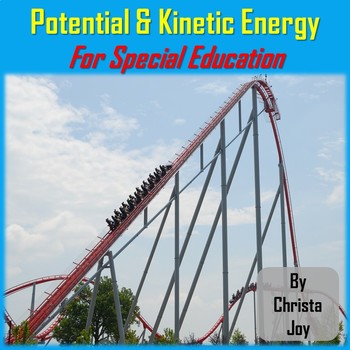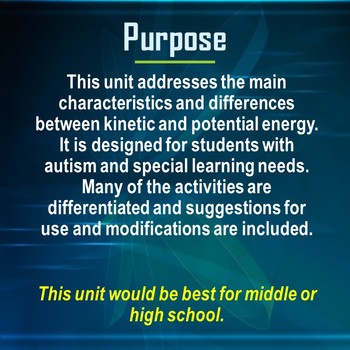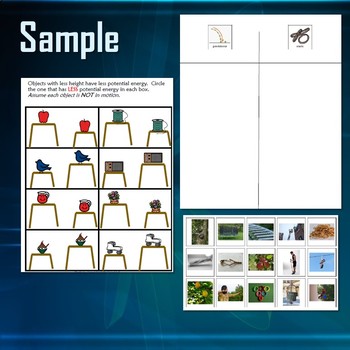Potential and Kinetic Energy Unit for Special Ed PRINT and DIGITAL
CLICK FOR PREVIEW OF PRINTABLE MATERIAL
CLICK FOR PREVIEW OF DIGITAL ACTIVITIES
$15.00
The Potential and Kinetic Energy unit contains 194 pages and 50 google slides of material specifically designed for students with special learning needs, especially autism who are in middle and high school. This unit addresses the characteristics and differences between potential and kinetic energy in a simplified but rigorous way for students with diverse learning needs to make meaningful and authentic connections to the material. There are many opportunities for students to engage in repeated information on these two main types of energy. This repetition encourages true understanding of this very abstract concept. In addition, many of the activities and assessments include more than one version, suggestions for differentiation, and options for presentation.
✩✩✩ This unit now contains digital versions of the activities. There are 50 google slides. Please see the video preview for a walk-through of some of the slides. The experiments are also included in a digital format.
See the preview for a more detailed look at the contents.
*****************************************************************************
The Potential and Kinetic Energy Unit Includes:
- 14 days of detailed lesson plans
- 67 page book PLUS a pre-recorded power point show
- mp4 version of the book you can insert into a google slide or assign in google classroom
- Vocabulary board
- 14 Vocabulary cards and cut/paste activities
- 24 Flash cards
- Circle maps (plus digital versions)
- Sorting Activities (plus digital versions)
- More or less energy activity (plus digital versions)
- 2 Experiments (plus digital versions)
- Cut and paste close worksheets (plus digital versions)
- Assessments (3 versions) (plus digital versions)
Most activities (not book or flashcards) are in color and BW.
*****************************************************************************
Much of what I have learned about curriculum development is incorporated in these units. For example, do not be afraid of repetition. It is critical that students with significant disabilities get to experience material over several days to be able to fully assimilate what is being taught. Also, adding visual supports to your printables and class activities helps students be able to pay more attention to the content you are presenting rather than the mechanics of what is expected. Finally, ask questions. Good questions!! Regardless of the material, if we can ask students good questions it will push them to think more deeply than before.
♥As always please take a moment to leave feedback or post any questions you may have.
$15.00
Lorem.



